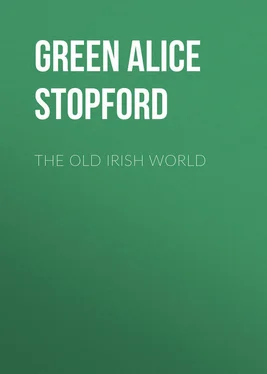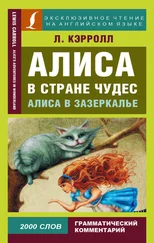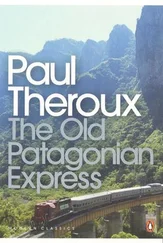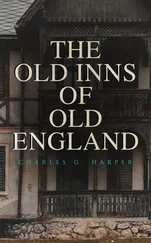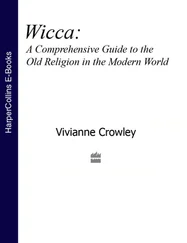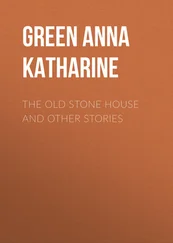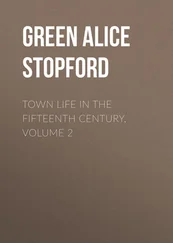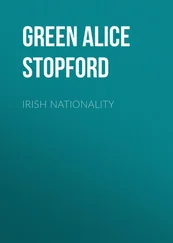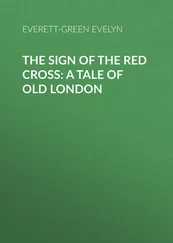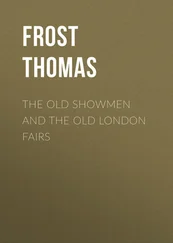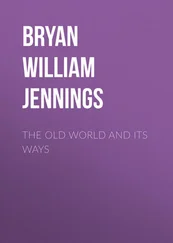Alice Green - The Old Irish World
Здесь есть возможность читать онлайн «Alice Green - The Old Irish World» — ознакомительный отрывок электронной книги совершенно бесплатно, а после прочтения отрывка купить полную версию. В некоторых случаях можно слушать аудио, скачать через торрент в формате fb2 и присутствует краткое содержание. Жанр: literature_19, foreign_antique, foreign_prose, Историческая проза, на английском языке. Описание произведения, (предисловие) а так же отзывы посетителей доступны на портале библиотеки ЛибКат.
- Название:The Old Irish World
- Автор:
- Жанр:
- Год:неизвестен
- ISBN:нет данных
- Рейтинг книги:4 / 5. Голосов: 1
-
Избранное:Добавить в избранное
- Отзывы:
-
Ваша оценка:
- 80
- 1
- 2
- 3
- 4
- 5
The Old Irish World: краткое содержание, описание и аннотация
Предлагаем к чтению аннотацию, описание, краткое содержание или предисловие (зависит от того, что написал сам автор книги «The Old Irish World»). Если вы не нашли необходимую информацию о книге — напишите в комментариях, мы постараемся отыскать её.
The Old Irish World — читать онлайн ознакомительный отрывок
Ниже представлен текст книги, разбитый по страницам. Система сохранения места последней прочитанной страницы, позволяет с удобством читать онлайн бесплатно книгу «The Old Irish World», без необходимости каждый раз заново искать на чём Вы остановились. Поставьте закладку, и сможете в любой момент перейти на страницу, на которой закончили чтение.
Интервал:
Закладка:
Nor is this the worst of the matter. Suppose that an Irish boy has been stirred by what he has seen in his country home. There was, perhaps, beside it a Danes’ Fort, a Giants’ Ring, one of the two thousand mounds piled up in Ireland by human hands, a Rathcroghan, or a mighty Ailech of the kings where legendary monarchs sleep on their horses waiting for the day that shall call them to ride out. He may have lived by a solemn burial place of great chiefs, by a round tower, by a high cross deeply carved, by some island of saints rich in ruins and sculptured slabs. He may have been taken to the Irish Academy and seen the Psalter of Columcille; or to Trinity College to look on the book of Kells; or to the National Museum to be turned loose among the carved rocks, the copper cauldrons, the golden diadems and torques, the mighty horns of bronze, the heavy Danish swords, the weights for commerce, the marvels in metal and enamel work, the Tara brooch, the Ardagh chalice, the Cross of Cong, the long array of crosiers and bells and shrines and book-covers. He may learn by chance that his country is the wonder of Europe for the wealth and beauty of its relics of the past. Desire may come on him to know the story of a land so astonishing in the visible records left by his ancestors. Descended from a race who had history in their very blood and the glorious tradition of their fathers, he may feel that old hereditary passion burn in his heart. He will add history to his study of the English language and the essays of Smith.
But even in that case, once entered on the course of education provided for him by the Intermediate Board, he will find through the whole of his pass work or of his honour work not one word to tell him who made the marvels he has seen. For in Anglicised Ireland it is ordered that history shall begin in 1066. The Irish annals record a comet in that year. But it is not for the comet the year is chosen, but because the date of the Norman Conquest of England is to mark the beginning of history for Ireland. From the first the student is caught by the pleasant fiction which is now proclaimed on every Unionist platform that Ireland “under the English ownership,” has no life save that which England gives. Irish history is not to be the story of Ireland, but of the “United Kingdom.” It is to travel with the fortunes of England step by step. An exact care conducts the student through the centuries. All dates are ruled by English text-books, never by periods of change in Ireland. According to the step by step theory, if the Irish student must begin his story of Ireland with William’s Conquest of England, he must pause at the end of the English Wars of the Roses. What matter if that close of a period in England happens in Ireland to be in full midway of a very extraordinary racial and constitutional movement full of vital energy? The teacher must by order cut his story in half, and start again to pull up his next course sharply at the death of Elizabeth, a merely nominal date in Ireland, which ended or began nothing. There the next period opens by order, and ended this present year at a date (1784) when it would be absolutely impossible for an Irish teacher to call a halt except by stopping in the middle of a sentence; and for the coming year is to close at 1760, before the first movement for the emancipation of the Irish Parliament. Not a word will the Irish youth hear of the Irish kingdoms and schools and craftsmen and merchants, nor of the Danes and their fleets, nor of the Irish culture spread over Europe. He would know nothing of Columcille and the work of Iona, nor of Columbanus and the work of St. Gall and of Bobio. Nothing will be told of St. Brendan and his sailing to the west; nor of learned Fergil the Geometer, who in spite of the orthodox theories of an impassable equator, alone maintained that there were living men at the antipodes; nor of the Irish goldsmiths and builders. Cormac’s chapel must go. The very name of Brian Boru is expunged. There can be no mention of the five hundred years of Irishmen’s fame in Europe as classical scholars, philosophers, saints, merchants, or travellers. The centuries of Ireland’s history as a free and independent country are blotted out, and he may catch no glimpse of his people save in the various phases of their material subjugation. During his entire course he can turn no wandering eye on an Ireland that had any art, literature, or industry of its own – a place where anything may have happened on its own account, or where any interest may lie detached from an English book of chronology.
This disastrous conception of the “Union” as a kind of amalgamation of countries in which all national limits are submerged and lost follows the Irishman at home and abroad. He can scarcely set foot in Europe save in the track of Irish wanderers of every age whose fame should be his glory. But the shadow of this distorted notion hangs round him – the shadow of the predominant sharer of all the effort and fortune of his people. In the published Catalogue of the MSS. in the Royal Library at Brussels, he must look for the Irish Annals and historical documents under the one heading Angleterre , without even a sub-heading Irlande . In Switzerland, surrounded by relics of the six hundred and thirteen dependent houses of St. Gall, whence Irish monks restored civilization to that land, he will be told at S. Beatenberg by the guide-books that S. Beatus was British , and by local tradition that he was Scotch. At the shrine of San Pellegrino in the Apennines, he will hear praises of a Scotch king’s son. In Rome he will learn that England was “the Isle of Saints.” Against these ignorances his training in Ireland gives him no protection. Similar fallacies pursue him across the Atlantic. Let him go to America, and Washington Irving will tell him of the mariner whose story was one of the moving causes that led Columbus to enquire of the land beyond the Ocean, and will inform him that this famous St. Brendan was a Scotch monk. Many others he will find ignorant of history, and above all anxious not to identify Ireland with any of her children that have done great things. Mr. Whitelaw Reid will explain to him that the emigrants from Ulster to America, the Ulster-born leaders who fought for American independence in counsel, in convention, and in the field; the “Sons of St. Patrick” who poured out their money and their blood for Washington – that all these were Scotchmen , of no Irish kin or race, whose followers and descendants have manfully rejected the term “Scotch-Irish” because it “confused the race with the accident of birth,” and called themselves “Ulster Scots” to show they had no part or lot with the Irish by blood ( Celtic Review , Jan., 1912). He apparently sees in the Presbyterian religion of the “Ulster Scot” some subtle evidence of a nobler and more distinguished origin than the “Scotch Irish,” some guarantee of Low-German or English stock.
The new school of American Irish, who under the influence of the “Anglo-Saxon” enthusiasm, or with a desire to be on the winning side, lay claim to a “Scotch” descent, ignore the historical meaning of the word “Scot,” or the origin of the name “Scotland.” In vain for them authentic history may tell of the ceaseless wanderings of the Gaelic people across the narrow seas. From Ireland the Scots in early times spread over the Hebrides and western Highlands, and carried their settlements and speech over the Lowlands of the Picts and Britons to the very borders of the little English colony of the Lothians, leaving the western and middle Lowlands the most Celtic region in Scotland. Irish folk settled freely in Scotland until the confiscation of Ulster; as for example when the Monroes and Currys crossed the sea, about 1300, with a number of other noble families who obtained grants of land. Inter-marriage was very frequent at all times. Back to Ireland again came streams of immigrants from the “Scot” or Irish settlements across the water. The mingled race of Celts and Norse from the Hebrides and the Highlands, all alike talking Irish and claiming Irish descent, poured colonies into Ireland without ceasing from 1250 to 1600, forefathers of hundreds of thousands to-day of Irish family. The western and middle Lowlands (along with the Highlands) sent from 1600 the main body of settlers of the Ulster Plantation, chiefly of Picto-Celtic stock; most of the first settlers must have been bi-lingual, speaking not only “Broad Scots” but their native Gaelic, which in 1589 was still the chief language of Galloway. Scots and Irish were the same to Henry VIII., whose servant Alen protested in 1549 against any “liberty” for the Irish, which, he said, was “the only thing that Scots and wild Irish constantly contended for.” The Scots of the Isles were known to Elizabeth as “those Yrishe people,” “the Yrishes”; the “English Scots” whom she employed in her Irish wars were so called from their political faction and Protestant religion, not from any difference of blood from their brethren. In 1630 the scholar Bedell included Irish and Scots in one single group; “and surely it was a work agreeable to the mind of God that the poor Irish, being a very numerous nation, besides the greater half of Scotland, and all those islands called Hebrides, that lie in the Irish Sea, and many of the Orcades also that speak Irish, should be enabled to search the Scriptures.” The old Irish of Ulster in 1641 excepted the Scots from their hostile measures as being of their own race, and this only a generation after the Plantation, when most of the evicted Irish must have been still alive. Jeremy Taylor in 1667 describes the Scots and Irish of north-east Ulster as “ populus unius labii
Читать дальшеИнтервал:
Закладка:
Похожие книги на «The Old Irish World»
Представляем Вашему вниманию похожие книги на «The Old Irish World» списком для выбора. Мы отобрали схожую по названию и смыслу литературу в надежде предоставить читателям больше вариантов отыскать новые, интересные, ещё непрочитанные произведения.
Обсуждение, отзывы о книге «The Old Irish World» и просто собственные мнения читателей. Оставьте ваши комментарии, напишите, что Вы думаете о произведении, его смысле или главных героях. Укажите что конкретно понравилось, а что нет, и почему Вы так считаете.
